Get in Touch
We are here to help you 7 days a week and respond within 24 hours. Plus, you can find most answers to your questions right on FAQ page.
Home >
What We Do
Diversity is key to managing natural resources in rainfed ecologies. We see the integral nature of natural resources management, diverse and multiple production and livelihoods; each reinforcing the health of others. Prosperity and security in rainfeds depend on strengthening multiple portfolios of livelihoods; we therefore, work on multiple production systems and associated livelihoods.
WASSAN emphasizes diversity in sustainable natural resource management in rainfed ecosystems. We integrate natural resource management, diverse production systems, and multiple livelihood strategies to create resilient ecosystems, robust livelihoods, and food-secure communities. Our goal is to build a future where rainfed areas thrive, showcasing the power of harmony between human needs and natural systems.
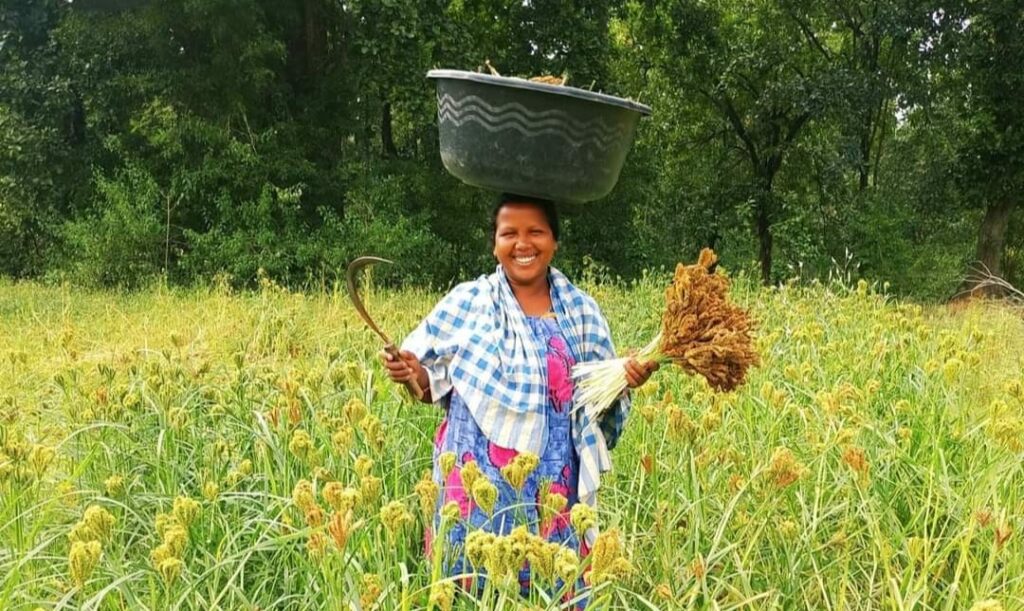
WASSAN partners with the Government of Odisha for the Special Programme for Promotion of Millets in Tribal Areas. This is being implemented in 177 blocks in 30 districts of Odisha. The “Special Programme for Promotion of Millets in Odisha” is named as Odisha Millet Mission (OMM) is a flagship programme of Government of Odisha under the department of Agriculture and Farmers’ Empowerment. The vision of Odisha Millets Mission is to improve the livelihood of small and marginal farmers, particularly in rainfed areas, through sustainable and climate-resilient millet-based farming systems, ensuring improved incomes, nutrition, and empowerment of women and tribal communities, with principles of inclusivity, equity & justice. Visit: https://milletsodisha.com/
→ Increasing household consumption
→ Revalorization of millet food cultures
→ Conservation and promotion of millet landraces
→ Promotion of millet-based processing enterprises.
→ Improving productivity of millets-based crop systems.
→ Promotion of millet value addition enterprises.
→ Inclusion of millets in PDS, ICDS, MDM, Welfare Hostels etc.
→ Facilitating the millet markets and exports.
→ Programme Processes, design
→ IEC material and Capacity building preparation
→ Collaboration with external resource persons and institutions
→ Extending support to CDAOs and Facilitating Agencies (FAs) at the district level.
→ Coordination with different departments as per the instructions of DAFE/ DAFP/ SPMU.
→ Preparation of monitoring, documentation, and reporting formats.
→ Conducting Innovation/Pilots under different thematic heads
→ Preparing and managing Web based MIS system
30
177
110
130
4000
2.4 Lakh
1.43 Lakh hectare
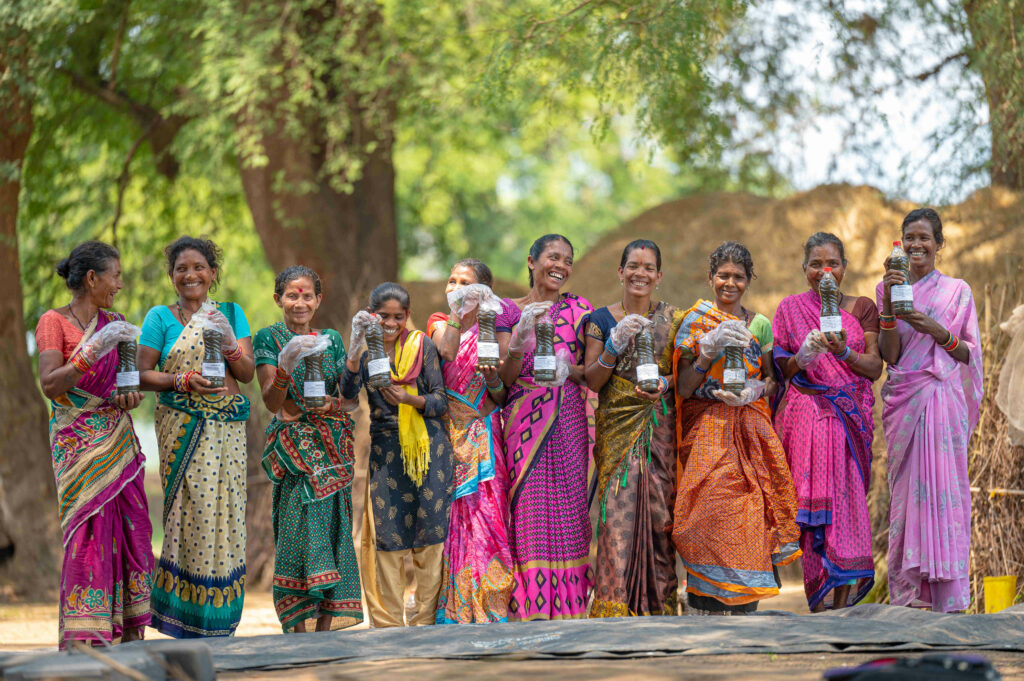
Evolved from the RRA Network’s comprehensive pilots, this program taken up by the Government of Odisha brings in a comprehensive revival of the rainfed production systems in an integrated way; it is implemented by CSOs in the district and targets thousands of families in the most interior Malkangiri district of Odisha. WASSAN supports this initiative as its State Professional Agency. The programme is implemented in 300 gram panchayats
covering 26 clusters of 9 districts.
80674
20053
12152
Odisha, with the third highest rainfed area in India, faces significant agricultural challenges, especially for tribal farmers. ORAM aims to address these by integrating productivity enhancement with natural resource management to combat the effects of climate change, particularly droughts.
→ Increase area productivity by 10% in 5 years through regenerative and resilient agriculture systems.
→ Secure crops from dry spells via participatory rainwater management.
→ Enhance dietary diversity to include at least 5 food groups at the household level for improved nutrition.
→ Increase household incomes of rainfed farmers by 50%.
→ Reduce drudgery and labor in farm operations by 25%.
→ Agroecology: Promoting crop diversification (millets, pulses, oilseeds, vegetables).
→ Nutrition-Sensitive Agriculture: Enhancing nutrition outcomes through crop diversification, nutrient-rich foods, integrated farming systems, and nutrition education.
→ Living Soils: Implementing soil health management, organic farming, and bio-cultures.
→ Water Conservation & Protective Irrigation: Focusing on rainwater harvesting and small irrigation infrastructure.
→ Biodiversity: Conserving and sustainably using genetic resources.
→ Post-Harvest and Primary Processing: Establishing infrastructure for handling and processing fruits and vegetables.
→ Livestock: Promoting indigenous livestock systems, healthcare, and fodder development.
→ Fishery: Developing fingerlings/yearlings/nursery networks and integrating indigenous fish species.
→ Agripreneurship: Encouraging entrepreneurship among women, SHGs, FPOs, and individual entrepreneurs.
→ FPOs: Facilitating the formation and capacity building of Farmer Producer Organizations.
→ CLIC: Establishing Climate Information Centres for weather forecasts, pest information, and insurance services.
The mission will be implemented in phases, starting with Malkangiri, Koraput, Gajapati, Nuapada, and Rayagada districts. Key institutional arrangements include a High Powered Committee, State Level Implementation & Monitoring Committee, Directorate of Soil Conservation & Watershed Development, National Rainfed Area Authority, National Institute of Agricultural Extension Management, and Orissa University of Agriculture & Technology.
ORAM was established to address the agricultural challenges in Odisha’s extensive rainfed areas, aiming to increase productivity, manage water resources, improve dietary diversity, increase household incomes, and reduce labor drudgery.
→ Workshop in Koraput: Discussed strategic roadmap for ORAM, emphasizing sustainable agricultural practices and community engagement.
→ MoA for Implementation: A non-financial MoA was established for pilot projects in Koraput and Malkangiri.
→ Partnerships: Forged with government agencies, NGOs, and experts to integrate productivity enhancement with natural resource management.
→ Landscape Planning: Initiated in pilot districts, involving field surveys and community engagement.
→ E-Participatory Rural Appraisals: Conducted to gather community input and assess resources.
→ Capacity Building: Training sessions and workshops for field staff.
→ Convergence Plans: Developed to integrate ORAM with existing schemes.
→ Submission of the final MoA and deployment of WASSAN team members.
→ Ongoing coordination for the Kharif plan and scheme integration in the REWARD area.
→ Development of five production system proposals for Boipariguda Block, Koraput.
→ Active involvement of PRI members in planning and implementation.
→ Delays due to the code of conduct for elections managed through continuous communication.
→ Collaborative planning and continuous communication proved crucial for timely progress.
→ Recruitment of a Technical Expert cum Documentation Expert to enhance team strength.
→ Signing of the MoA by July 2024.
→ Full deployment of WASSAN personnel in both pilot blocks.
→ Finalization and implementation of the convergence plan.
→ Continued coordination with various departments to leverage and integrate schemes.
→ Submission of production system proposals and development of a separate proposal for ORAM focusing on agroforestry.
ORAM is making significant strides in enhancing agricultural resilience and promoting sustainable practices in Odisha’s rainfed areas. Continued commitment, innovation, and collaboration are essential for sustaining momentum and achieving the mission’s objectives.
We extend our sincere appreciation to all stakeholders, experts, and organizations for their dedication and collaboration in advancing ORAM’s goals and improving the livelihoods of farmers in Odisha.
WASSAN, in collaboration with Welthungerhilfe (WHH), is implementing the project in Malkangiri and Rayagada districts to ensure that small and marginal farmers have significantly improved incomes, diet diversity and farm productivity through the practice of agro-ecological farming. Capacity building through training sessions for extension workers and trainers, village-level concept seeding, Farmer Field Schools, and micro-planning activities are conducted. These efforts engage farmers, PRI members, and government officials to incorporate Sustainable Integrated Farming System models, Integrated Natural Resource Management models and agro-ecological interventions into the Gram Panchayat Development Plans (GPDP). To promote agro-ecological produce, the project establishes farmers’ markets and outlets, raising awareness about the benefits of ecological food. Participatory Guarantee System (PGS) measures have been taken up to ensure quality and certification.
14000 nos. Small and Marginalized farmers/HHs will be benefited through direct and indirect interventions.
More than 50 Gram Panchayat Development Plans (GPDPs) will be developed through multi actor partnership by including sustainable integrated farming systems, Integrated Natural Resource Management, and agroecological interventions.
WASSAN supports ST & SC Development, Minorities & Backward Classes Welfare Department as Program Management Unit (PMU) to implement Natural Farming Transition in Odisha Tribal Landscape (NFTO) in 3 districts- Sundargarh, Keonjhar and Mayurbhanj.
Simultaneously, in collaboration with CYSD in Keonjhar, we are training and grooming a cadre of Farmer Resource Persons (FRPs). These local cadres will further implement NF practices in their own farmland as well as support other farmers locally in their transition to NF.
We have also initiated piloting of automated Bio-resource Centre (BRC) units in Sundargarh, Keonjhar, Mayurbhanj and Ganjam. In Ganjam the piloting is carried out with NCNF. These BRC units are designed to provide farmers with easy access to various bio-formulations, enabling them to adapt NF practices effectively.
On on-going efforts will continue to focus on expanding the reach of NF practices, enhancing the capabilities of FRPs and refining operations of our BRC units. We aim to extend the successful models to additional districts and communities, ensuring that more farmers benefit from NF.
3600
Ensuring Irrigation to agricultural activities remains a significant challenge across the country. After so many programmes and interventions there are areas where irrigation is a major issue. Considering water scarcity and erratic and unpredictable rainfall in Malkangiri’s rainfed regions, micro-irrigation Projects are being implemented. Under this initiative, farmers have been trained in water management, Crop management, crop rotation etc. A water user group has been formed with the targeted beneficiaries. Detailed studies have been done through the project engineer on Geo hydrology map, Land use map, Cropping pattern, surface geology, Geomorphology and Crop Failure Map.
→ Secure crops from dry spells in Kharif.
→ Improving Productivity and securing food security.
→ Optimum Rainfall water use efficiency.
→ Creation of irrigation resources.
→ Change in the irrigation intensity.
→ Promotion of various micro-irrigation technologies to increase the area under production.
Under this program, two types of irrigation systems are preferred: diversion-based irrigation (DBI) and lift irrigation. Water is taken from a higher elevation by gravity force and dispersed in the command area in the DBI models. These projects are cost-effective and don’t require any additional power for distribution of water. DBI has a substantially cheaper operating and maintenance cost than Lift irrigation. However, subterranean pipes with water distribution outlets are spread across the command area. Control points with valve arrangement are preferred under the project for each operation of water distribution with the pipeline. The outputs are intended for both flow and micro irrigation.
This project assists farmers in securing Kharif crops, resulting in year-round food security, crop selection based on land pattern and soil type to increase productivity, and diversifying the existing cropping pattern with higher value crops in upland and medium lands. Adoption of organic farming and natural farming to minimize input costs and increase profit.
6
275
651
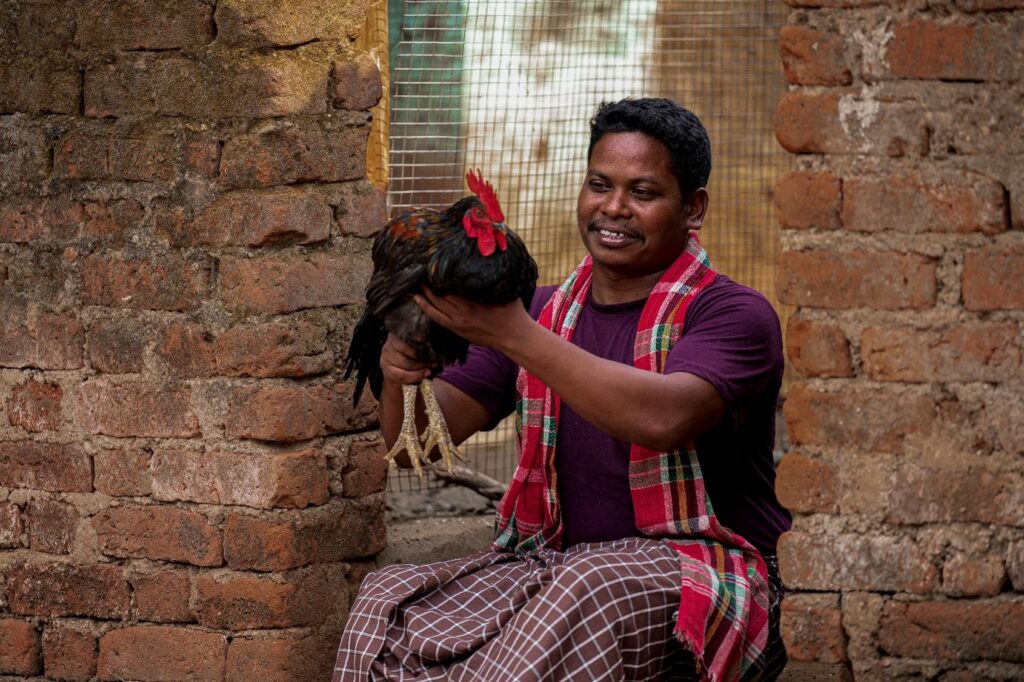
Livestock, particularly poultry and goats, play a pivotal role in the agricultural and socio-economic fabric of rural India. These animals are often referred to as the “ATM” for rural households due to their ability to provide quick and accessible financial returns with minimal investment. Poultry farming is a significant source of income for rural families. Chickens are raised for both meat and eggs, providing a steady source of protein and revenue. Basic infrastructure and locally available feed are often sufficient to start a small-scale operation.
WASSAN has been supporting various organizations, including government bodies, civil society organizations (CSOs), and institutions, supporting poultry and goat farming in rainfed areas. Conduct training programmes to enhance the knowledge of farmers, entrepreneurs and the project staff. In Odisha, in collaboration with the DA & FE and DAH & VS under the SPPIF programme around 352 nos of Indigenous Chick production units (ICPU) have been established. This enterprise shall ensure the supply of indigenous chicks in the villages. It also creates an additional source of income for the entrepreneur. Along with the ICPU unit provisions are made for small poultry night shelters for safe hatching.
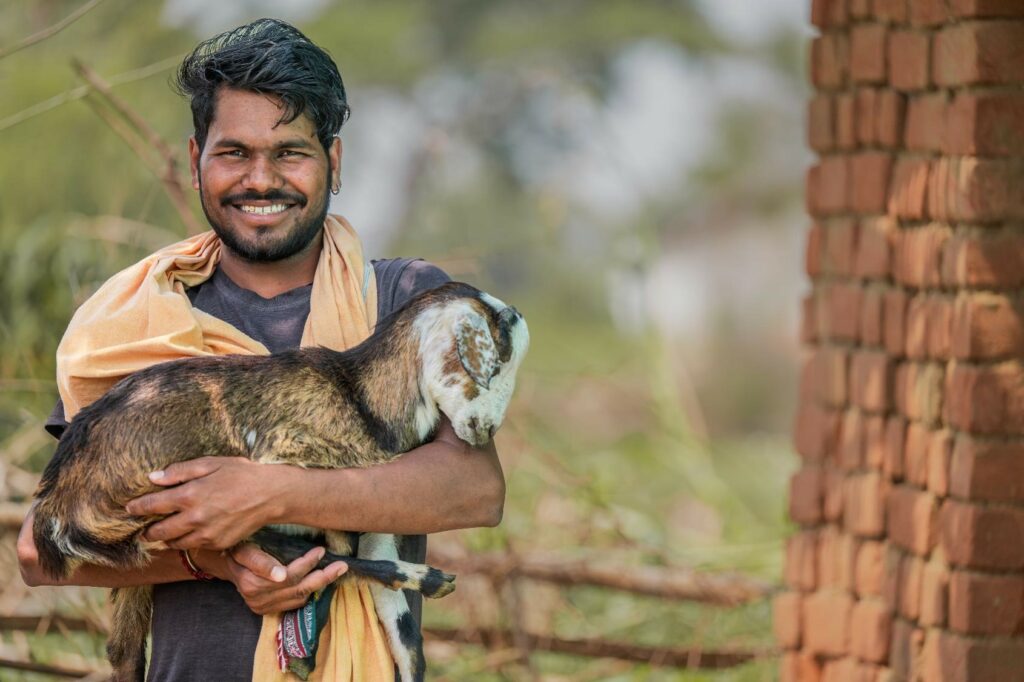
Breed Characterization and conservation is crucial for maintaining genetic diversity, ensuring food security and sustaining rural livelihoods, various organizations including government bodies, CSOs Research Institutions play an essential role in conserving indigenous breeds of livestock and poultry. The native breeds are not only important to conserve to maintain the biodiversity but also many such native breeds are interlinked with the cultural heritage.
Why should Breed be Registered / Conserved?
WASSAN has been supporting various organizations, including government bodies, civil society organizations (CSOs), and institutions, supporting poultry and goat farming in rainfed areas. Conduct training programmes to enhance the knowledge of farmers, entrepreneurs and the project staff. In Odisha, in collaboration with the DA & FE and DAH & VS under the SPPIF programme around 352 nos of Indigenous Chick production units (ICPU) have been established. This enterprise shall ensure the supply of indigenous chicks in the villages. It also creates an additional source of income for the entrepreneur. Along with the ICPU unit provisions are made for small poultry night shelters for safe hatching.
Climate Resilience
Indigenous breeds are well-suited to thrive in harsh environments, from the arid deserts to the humid tropics, making them invaluable for sustainable food production.
Diseases Resistance
Many native breeds exhibit higher resistance to common livestock diseases, reducing the need for costly veterinary interventions.
Resources Efficiency
These breeds are adept at converting low-quality feeds into high-quality meat, milk, and other products, making them economically viable for small-scale farmers.
WASSAN has been working with the institution and agency for the registration of the native breed in Andra Pradesh, Odisha, Gujrat state. Under Odisha, in collaboration with DAH & VS 4 nos of native breeds have been identified { Koraput- Narayapatna goat, Nuapada-Maraguda goat, Kalahandi- Dharmagad Sheep, Malkangiri-Pony (horse breed)} registration process is under process, along with the registration promotion and awareness creation has initiated.
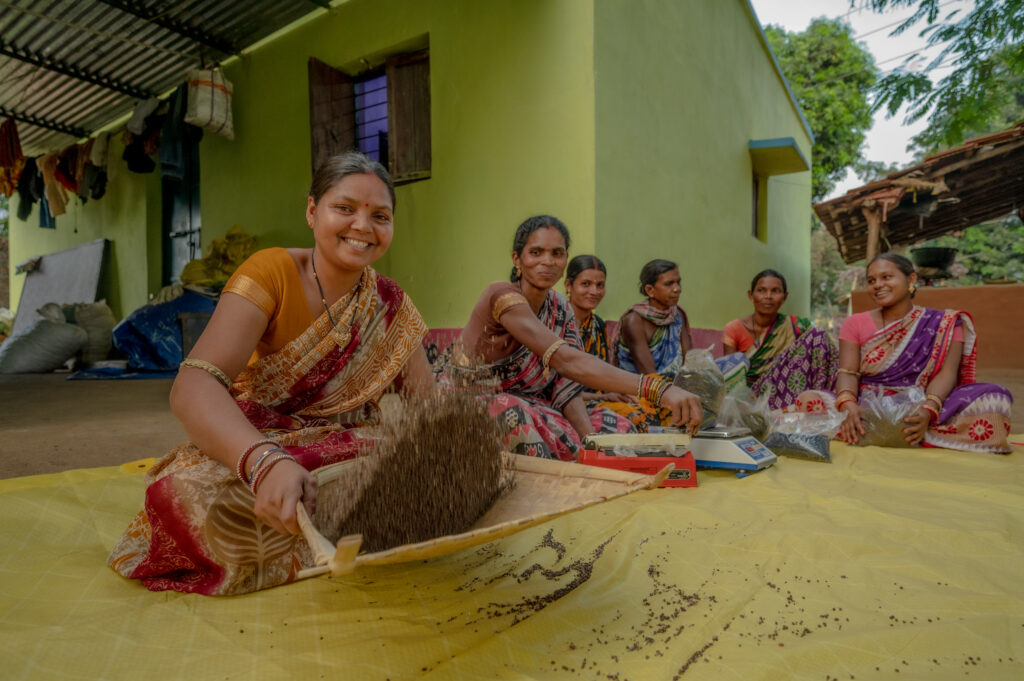
Our future food system largely relies on the continuous availability of crop genetic resources particularly diverse germplasm, landraces and crop wild relatives for use largely by farmers and researchers. During the last two to three decades, an exceptionally high rate of biodiversity loss where landscapes, species and intra-species diversity were lost in a rapid scale (FAO, 2019) and millets were one among the few crop species which were neglected and were nearing extinction.
Considering the importance of Millets in food and nutrition and climate resilience, Odisha state has declared Odisha Millets Mission during 2017 to revive millets in farm and plates. Under Odisha Millets Mission, one of the major activities was sustainable conservation and utilization of millet genetic resources particularly finger millet landraces. In Odisha, finger millet landraces constitute more than 80% Odisha’s production system. The finger millet landraces were grown in local ecotypes, heterogeneous and showed variable phenology and provided moderate to high yield under varied conditions. With the twin objective of increasing productivity for sustainable production and promotion of millets in the region, a major activity was taken up to mainstream finger millet landraces into the production system through selection of superior landraces and systematic evaluation.
Objectives
→ To implement alternative seed systems for landraces promotion
→ To establish working group on seeds for implementation of alternative seed system, varietal purification, and release of landraces
→ To conduct different trials in farmers’ fields, collect and analyze data scientifically and submit the varietal identification proposal.
Process Steps
→ Exploration and Documentation
→ Participatory Varietal Trial (PVT)
→ Quality Seed production & Mass Selection
→ tandard Operating Procedure for Seed System for Landraces
→ Varietal Purification
→ Multi-location Trials of Purified Landraces
→ Proposal for Varietal Release
→ Release & Notification of Landraces
Food and nutritional security are key concerns the world over as low food intake and poor access to food in underdeveloped countries remain unresolved issues. Feeding in excess of 143.58 cr Indian populations with the climatic change challenges and availability of limited resources has been a key concern.
In India, the tribal and rural people traditionally used about 9500 wild plants for various purposes such as medicine, food, fodder, fuel, fiber, essence, culture and other miscellaneous purposes. Odisha is blessed with diversified food culture due to presence of different tribal community at different topographical location. This NUS/ORPHAN/FORGOTTEN crop has the potential to act as a climate resilient crop and recognizing its beneficial characteristics can also increase its market value.
Objectives
→ Germplasm collection of forgotten food and documentation of food cultures.
→ Reviving forgotten food into cultivation practices, introducing it at farmer community level.
→ To build population awareness of the neglected and underutilized species related to consumption habits and health benefits.
→ Conservation of neglected and underutilized species at in situ and ex-situ trails.
→ Value addition and marketing of forgotten food.
→ To develop a package of practices to revive, prepare guidelines for sustainable harvest of wild species from forests to meet the food and nutritional scarcity.
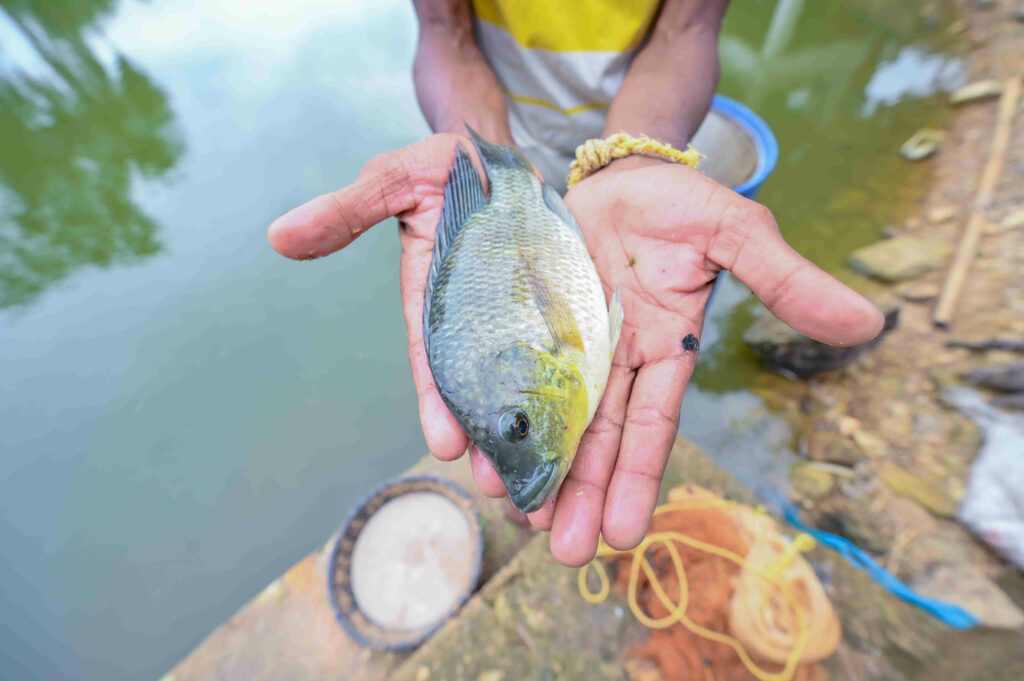
Fisheries defines the culture practice of fresh water, brackish water and marine water fish and shellfish culture. Special programme for promotion of integrated farming aims on upliftment of farm ponds in its working areas. The total work includes identification of beneficiaries, supporting them with fingerling/advanced fingerlings, capacity building and exposure visit to fish farms.
In fisheries fish feed comprises a major cost of cultivation. In order to mitigate that at village level the scheme also supports one nano fish feed mill which includes one fish feed pulveriser and another fish feed pelletizer.
Implementation of the scheme has been started from 2022 and till its continuing. Till now around 3 lakh fingerlings have been stocked in nearly 4000 water bodies. .Average production has been recorded @200kg per acre in the last two years.
Total Nano Fish Feed mills installed in the nine districts by SPPIF number 52 for the financial year 2022-2023 and 42 for the financial year 2023-2024. In 2022-2023 it had shown a good amount of food production. The total production was 158.6 quintals in all over districts, and has been sold to 655 farmers @40-50/- depending upon the locality. The maximum monthly production has been 20 quintal, whereas the minimum production was 5quintal.The average production per month was 8 quintals. The farmers were able to generate 4,800/- net income excluding the production and operational cost per month. For the FY 2023-2024 the construction work has completed and machine purchase is about to be over. Hoping for the same bloom for the successive years.
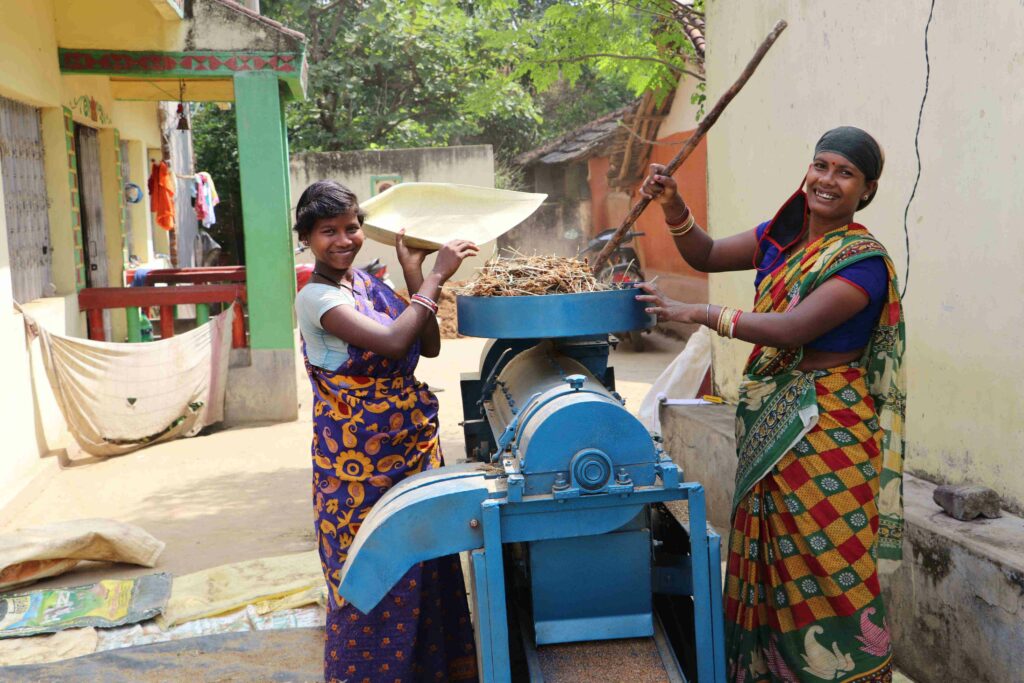
In a pioneering initiative within Odisha, the Participatory Machinery Development (PMD) project was launched under the auspices of the Odisha Millets Mission. This innovative program stems from recommendations by the Gender Analysis Committee, aiming to alleviate the burden on vulnerable farmers through a collaborative approach. By involving farmers directly in field trials, the project seeks to gather invaluable feedback to redesign/necessary modification into the existing agricultural machinery, ultimately enhancing women usability, ergonomics, efficiency and sustainability in agri. Mechanization beyond the technical aspects.
The primary objective of the PMD is to reduce the drudgery faced by women farmers, develop SoP related to application and operation of tools considering different age and gender-based groups.Through active participation in field trials and feedback sessions, farmers contribute their insights towards the adaptation and improvement of agricultural tools and machinery. This participatory process ensures that the equipment meets the specific needs and operational realities of local farming communities. The project is currently operational across 5 districts in Odisha: Sundergarh, Keonjhar, Nuapada, Koraput, and Gajapati where the trials will be conducted in a total of 15 villages with 75 farmers.
The Implementation Strategy unfolds through several key stages
→ Identification of tool/machinery
→ Designing semi-structured questionnaire for feedback
→ Conducting the machinery trials and feedback survey with farmers
→ Carrying out the suggested iterations
→ Proposing the iterated model to the government.
An expert committee and a field task committee has also been formed to give their feedback on trial design, methodology and questionnaire for different gender and age groups comprising of the following members:
→ Chief Engineer, DAFP (chair)
→ Representative (SLFMTTC, OUAT, ICAR-CIWA, Mission Shakti Dept. and MAKAAM)
→ Joint Director of Agriculture, SPMU OMM (Convenor)
→ Scheme officer (SPMU, OMM, SMAM/NFSM)
→ Ms Sabarmatee, Padmashri, SAMBHAV
→ Professor Nitya Rao, University of East Anglia, UK
→ Professor Apurba Shee, Natural Resource Institute, University of Greenwhich, UK
→ Mr. Peter Bakos, Independent Expert
→ Gender Coordinator/Represenative and State Coordinator, WASSAN
The first phase of feedback trials has successfully concluded for several machines including the OUAT Ragi Thresher cum Pearler, Grader, and Cycle Weeder. Additionally, ongoing trials are being conducted for other machines such as battery sprayers, manual seeders, and SMI markers. Each trial phase aims to enhance machine performance, safety, ergonomics, usability, and farmer satisfaction, paving the way for sustainable agricultural practices in the region. By leveraging local knowledge and expertise, the project not only addresses immediate challenges but also fosters long-term resilience in agricultural communities across Odisha.
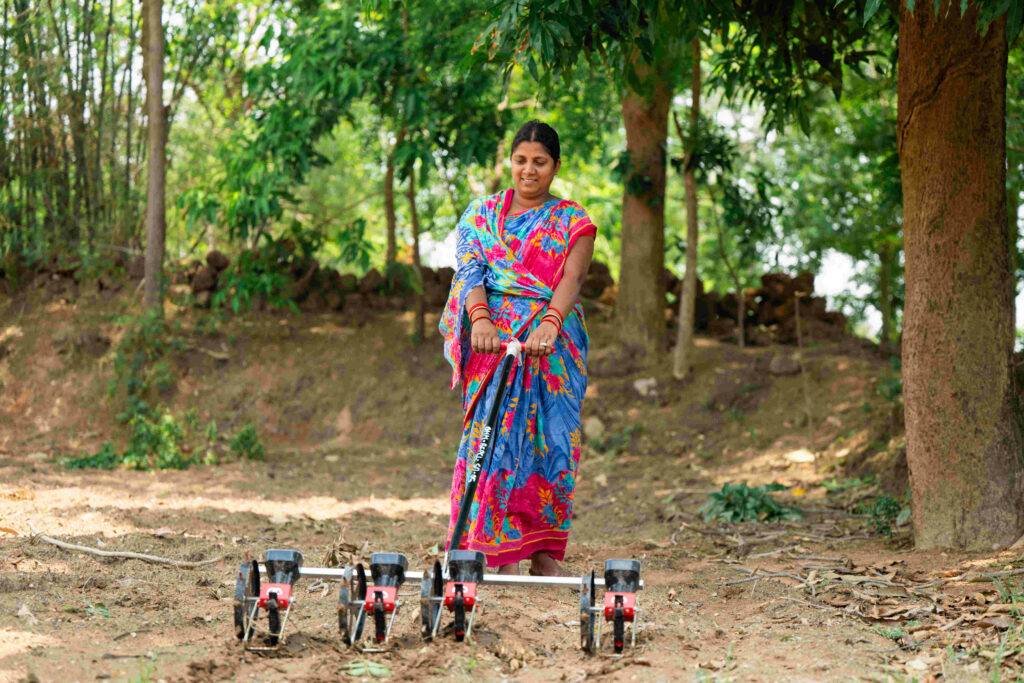
WASSAN is committed to achieving SDG number 5, Gender Equality in its area of work. And hence, the effort around achieving this has started from many years back. WASSAN, through OMM, right from the very beginning, has been working with WSHGs by helping them and building their capacities to become millet entrepreneurs.
The tagline of the International Convention on Millets (ICM) had Gender Equity as, Climate Resiliency and Nutritional Security, reinforcing the point. To further establish clear insights into making the approach more gender inclusive, a Gender Action Committee (GAC) was formed to identify and analyze gaps and recommend parameters to make the programme gender equitable in the coming days. Followingly, identification and targeted inclusion of Single women went off really well in OMM with the department giving its go ahead for expansion. Engagement with women with an aim to make them empowered, like their active role in access, control, decision making over resources and leadership. In the coming days, focus would be to see Gender Equality as a cross cutting mandate over all projects WASSAN is into in addition to making itself Gender Sensitive and Inclusive as an organization.
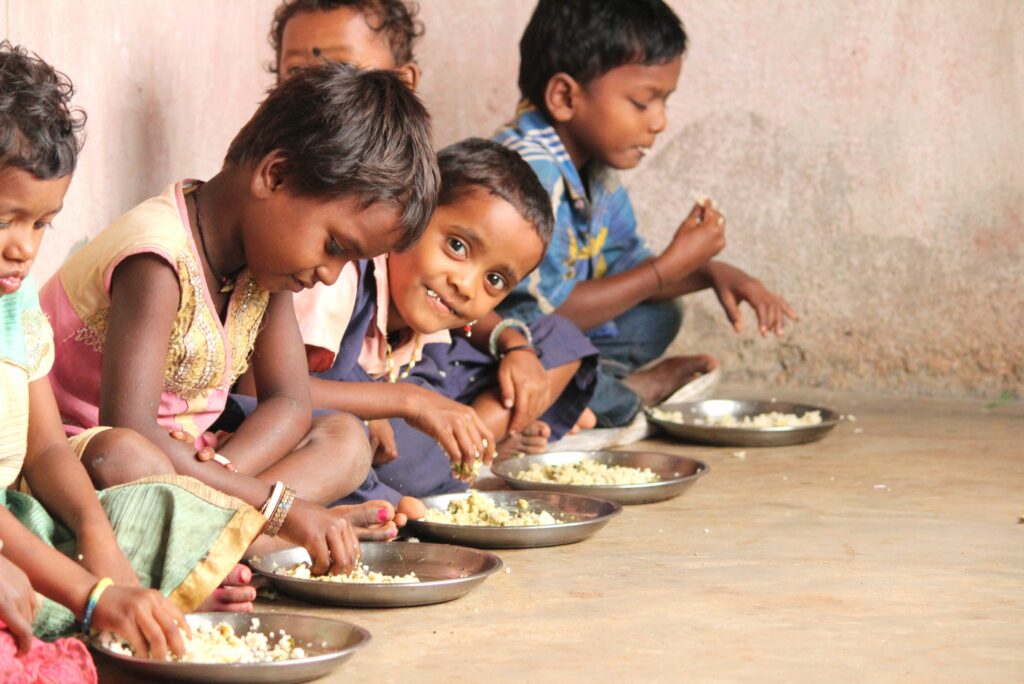
Note on Millets Inclusion Programmes under Odisha Millets Mission
India is facing a double burden of malnutrition. While on the one hand, undernutrition among children and anemia among pregnant women continues to be high, the rates of obesity and overweight in children and adults alike continue to increase. Much of this problem of malnutrition stems from the poor quality of diet that people are consuming, which are rich in carbohydrates and fats derived from a select number of food sources. Millets which are now popularly known as “Nutri-Cereals” are rich in protein with a balanced amino acid profile. Protein intake supports linear growth and prevents growth faltering. They are also rich in essential micronutrients like iron, zinc, calcium, folate and B-complex vitamins.
As part of its mandate of promoting sustainability, WASSAN has played a pivotal part in the entire process of inclusion of millets in different schemes of the government of Odisha under OMM. Programme Secretariat, WASSAN under Odisha Millets Mission, proposed for inclusion of millets in ICDS, which provided a suitable platform for reaching the vulnerable group and modify the supplementary nutrition component to include Millets and make their diets nutritionally enriched and secure in Keonjhar and Sundargarh districts supported by DMF. It has created a 360-degree community to community ecosystem wherein millets are produced and value-added nutrition rich diets are received by the community through SHG/FPO involvement and government intervention. The inclusion programmes are facilitated by WASSAN including the mandate of course correction, monitoring, policy recommendations.
Inclusion of Millets in SSD Schools/Hostels
Ragi Ladoo: Ragi Ladoo programme for the students of SSD Department has been inaugurated in Keonjhar and Sundargarh districts with the objective of providing nutrition supplementation to the boarders of Schools/ Hostels of ST & SC Development department supported by DMF. The programme provides 7 ragi ladoos a week to about 87000 beneficiaries across 865 schools/hostels under SSD department in addition to their existing diet. A total of 53 WSHGs and 2 FPOs have been engaged in the process of cleaning, processing, packaging and supply of ragi ladoo mix to the schools and hostels. The programme utilizes about 400 metric tons of locally produced and procured ragi in the respective districts.
Inclusion of millets in MDM (S& ME)
Multi Millets Ladoo: The pilot for the inclusion of millets in MDM under S&ME department supported by DMF Sundargarh has been approved by the EC committee, DMF Sundargarh. The pilot will provide 4 multi millet ladoos a week to about 8500 MDM beneficiaries across 109 schools of Kutra block in Sundargarh district.
Note on millet processing and Value addition promotion programme in collaboration with the department of Mission Shakti
To promote WSHGs/SHG Federations, the Directorate of Agriculture & Food Production, Directorate of Mission Shakti & Nabakrushna Choudhury Centre for Development Studies have entered into a partnership on 17th August 2020 for the project titled ‘Promotion of Nutritional Security and Millets Based Livelihoods Through Women SHGs’. The prime agenda is to create sustainable livelihoods and improve nutritional security involving women SHGs through millet-based enterprises.
Objective
→ To provide additional nutrition supplementation
→ Create a value chain for promotion of local millets
→ Promote livelihood opportunities for WSHG/FPO members
Expected Outcomes
→ Re-introduce and promote the use of millets in food cultures in both urban and rural.
→ Encourage and facilitate the establishment of Post-harvest and Primary processing enterprises for Millets.
→ Promote the establishment of Millet value addition enterprises in rural and urban areas of Odisha.
→ Include Millets in Various government food programmes such as PDS, ICDS,MDM and Welfare hostel.
→ Facilitate and promote the Millet market and export of millet-based products
More than 4 crores
More than 3500 enterprises
3500 WSHGs | 42000 SHG Member
30 District and 177 Blocks
Millet Shakti (Marketing and Branding)
Millet Shakti is a collaborative initiative between the Odisha Millets Mission (OMM) and Mission Shakti. This joint effort aims to promote millet entrepreneurship, awareness campaigns, and the consumption of millets through women self-help groups (WSHGs) in Odisha. The initiative focuses on empowering women entrepreneurs, improving nutritional security, and creating sustainable livelihoods by integrating millet-based food items into both rural and urban areas.As of now, 26 varieties of ready-to-eat millet dry food packaged items have been developed under this brand.In the year 2023 Millet Shakti brand acquired Trademark status and is now available in e-commerce platforms such as Amazon,Milk Mantra and Zomato.
Partnership & Convergence
→ Institute of Hotel Management: Training and capacity building of WSHGs on preparation and standardization of new Hot cooked and value added Dry Millets products.Till date 360 no. of members have been trained.
→ Indian Institute of Packaging: Knowledge Transfer and training in packaging, testing and branding.Dissemination of Information on appropriate protocol for standardization of packaging. As of now 90 members have been trained.
→ Central Food Technology Research Institute(Mysore): Encompasses training on food,hygiene and technology encapsulating the updated code of Food standards of industries. Till now 56 no. Of members have been trained.
→ International Rice Research Institute: A tripartite MOA was signed between between Department of Agriculture,IRRI and Department of Mission Shakti for establishment of Mini Millet factory for production,packaging of Millets and Low GI Rice.
National and International Events
→ Poshak Anaj Award 2023 SwayamSradha SHG awarded as Best SHG entrepreneur in Value processing of Millets.
→ IITF Delhi Which Showcases the spirit of ‘Unity through Trade’, the Odisha Pavilion highlighted the State’s commitment to women’s empowerment & their participation in economic prosperity.It was a proud moment for our state to get the best state pavilion award for its display.
→ GIZ India promoting agroecology organized by (SuATI)’ project. Celebrated and showcased the stories of 15 remarkable female change makers in agriculture from India honored by the Hon’ble Minister of Agriculture, Karnataka Sri N. Chaluvaraya Swamy.
→ Divya Jyoti SHG of Sundergarh got the best women entrepreneur award in Startup Make in Odisha Conclave.
→ Participation in SIAL world food conference for displaying Millet food items in paris by Dibyajyoti,shaktimayee SHG members.
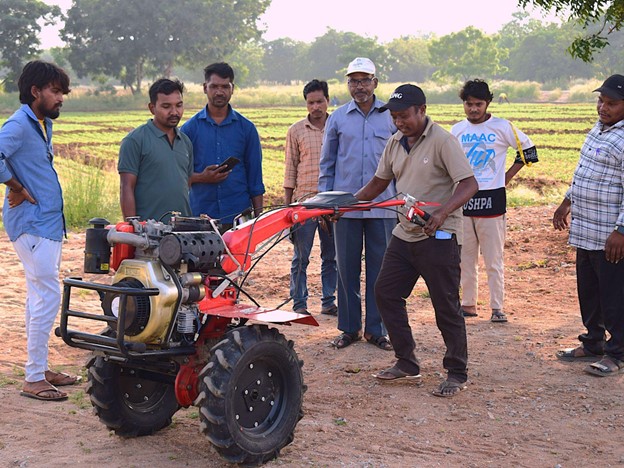
Innovation Guild (IG), an initiative by WASSAN and Rainmatter Foundation, is working towards building an ecosystem of support services to enable last-mile adoption of innovation across India’s remote geographies. Innovation Guild’s mission is to build technology adoption capacity of smallholder rural livelihood owners through a systemic matching of problem to solution and through an extensive localized network of skilled Village Level Entrepreneurs. For more details, visit https://www.innovationguild.in
The Innovation Guild creates a unique ecosystem that connects innovators, Civil Society Organisations (CSOs), Village Level Entrepreneurs, and Rural Communities. This collaborative approach aims to create an active Village Level Entrepreneur (VLE) network who can provide support services viz., sales, services, rentals and manufacturing of machinery in their community.
Key Achievements
→ Conceptualization and launch of the Innovation Guild platform
→ 320+ Village Level Entrepreneurs (VLE’s) from 10 partner organisations.
→ Onboarded 50+ innovations from 25+ Innovators from across India.
→ Collaboration with SRFMT&TI, CFMT&TI and local ITI’s with 50+ VLE’s successfully trained.
→ Conducted 5 field demo’s and 6 online demo’s for VLE’s to showcase innovations and enabling feedback loop for innovators
→ Partnered with financial institutions like RangDe to enable collateral free End-User Finance for Entrepreneurs.
Partners
→ Village Level Entrepreneurs (VLEs)
o 320+ VLE’s onboarded
o 107+ Active VLE’s who submitted problem statements
o 70+ VLE’s received Fellowships
o 50+ Ground Implementations
o 50+ Trained VLE’s
→ Innovators
o 8 partner innovators, including Suryanirbhar, Gofarmeasy, Autostudia, G3 STORE, Niyo Farmtech, Agnicart, Transform Tech, and Ekathva innovations private limited
o 25+ onboarded innovators with 50+ innovations in IG website
o Showcasing innovations through the IG platform
→ Civil Society Organisations (CSOs)
o 8 partner CSO’s including Gramya Ventures, Himalay Unnati Mission (HUM), LIPOK, Women’s Initiatives, WELL LABS, TRIF, DWARA e-Registry and PSI
o Field coordination, VLE identification and monitoring
→ Training Partners
o Southern Region Farm Machinery Training and Testing Institute (SRFMT&TI), Tractor Nagar, Anantapur
o Central Farm Machinery Training and Testing Institute (CFMT&TI), Budni
o Sri Satya Sai Venkateswara Pvt ITI, Anantapur
→ WASSAN Team
o Mr. M. Chandrasekhara Rao
o Mr. Malyaj Shrivastava
o Dr. S Sai Mohan
o Mr. K Santosh Kumar
o Ms. T Harshitha
8
(Andhra Pradesh, Telangana, Odisha, Maharashtra, Karnataka, Madhya Pradesh, Uttar Pradesh and Himachal Pradesh)
30+
(Alluru Sitarama Raju, Annamiya, Aurangabad, Kandhamal, Koraput, Manyam, Parvathipuram, Rayagada, Sri Satya Sai, Tirupati, and Vikarabad)
50+
100+
VLE Development
Innovator Engagement
Ecosystem Building
Financial Support
Capacity Building
Community Engagement

Public procurement of Finger Millet (Ragi/Mandia) in Odisha
This study is a collaboration of WASSAN and TIGR2ESS, University of Cambridge. Ragi (Finger Millet) Procurement has been introduced in Odisha in 2018-19, and from the beginning of the Procurement programme of Ragi and till now there are a lot of changes being happened in production and consumption pattern for Ragi, and also selling pattern of Ragi has been affected after implementation of Public Procurement of Ragi, for e.g. The MSP (Minimum Support Price) in 2018-19 for Ragi was ₹2987 per quintal and in 2021-22 it is ₹3377 per quintal, and if we are focusing on the changes in the market due to the introduction of Ragi procurement then we can also think of competition in prices of Ragi by local market, haats and other selling points. Before the introduction of procurement of Ragi, the price of Ragi in these selling points were ranging between ₹10 – ₹15 per Kg, and after introducing the MSP for Ragi the price went up in 2020-21 and was ranging between ₹20 – ₹25 per Kg for these selling points. In this project “Public procurement of Finger Millet (Ragi/Mandia) in Odisha”, Our project team tried to analyze the impact of MSP Procurement of Ragi on its open market sales, out of 14 districts in Odisha, we have selected 3 districts (i.e. Koraput, Malkangiri and Rayagada) for this study. To get the conclusive result from the study, they are doing farmers’ interview with Ragi farmers, and conducting Focused Grouped Discussion (FGDs), with one on one interaction with some Millets Traders.

Economic and Empowerment Impacts of Millets Processing and Value Addition Enterprise by Women SHGs in Tribal Areas of Odisha
Engaging the poor in livelihood programs through women self-help groups (SHGs) is a widely used strategy by state governments and non-governmental organizations (NGOs) in India. However, these projects have typically not been implemented in such a way as to facilitate a rigorous evaluation of their impacts. Given the societal and developmental importance of these livelihood initiatives, and given the significant public investments to support them, this knowledge gap is of great importance. It is important to fill this gap and provide some of the first rigorous evidence on the impact of a specific livelihood intervention. The project team, in cooperation with the Odisha Livelihoods Mission, is proposing a randomized evaluation of collective-based millet processing and value addition enterprises under Odisha Millets Mission (OMM).

About Learning Water Resources Management (LWRM)
Water management in rainfed areas for improving livelihood security of smallholder farmers: Out- scaling Australian- supported R4D in Odisha, Karnataka and Andhra Pradesh (or the Learning Water Resource Management or LWRM project in shorthand) is a collaborative project between the Commonwealth Scientific and Industrial Research Organization (CSIRO); Western Sydney University (WSU); South Australian Research and Development Institute (SARDI); Watershed Support Services and Activities Network (WASSAN), National Rain-fed Areas Authority (NRAA), Government of India’s Ministry of Agriculture and Revitalization of Rainfed Agriculture Network (RRAN). The project is funded by the Australian Water Partnership (AWP), the Australian Centre for International Agriculture Research (ACIAR) and CSIRO.
We are here to help you 7 days a week and respond within 24 hours. Plus, you can find most answers to your questions right on FAQ page.
Plot No. 685 & 686, Street No. 12, Narasimha Swamy Colony,
Nagole, Hyderabad – 500 068, Telangana, India
Mail: mail@wassan.org
Watershed Support Services and Activities Network (WASSAN) © 2025 by WASSAN is licensed under CC BY-SA 4.0
@2025 | Watershed Support Services and Activities Network (WASSAN)